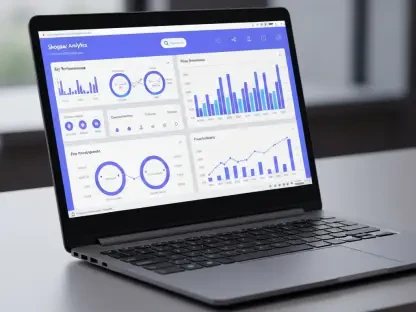In today’s interview, we have the privilege of speaking with Zainab Hussain, an esteemed e-commerce strategist with a strong background in customer engagement and operations management. Our discussion will focus on recent developments in China’s retail sector, particularly the significant decline in retail sales in Beijing and Shanghai, and what this means for China’s economic narrative and future. We’ll explore the steps China is taking to stimulate domestic demand, and the broader implications across the economy.
What is the significance of the recent decline in retail sales in Beijing and Shanghai?
The declines in retail sales in Beijing and Shanghai reflect deeper issues in China’s consumption landscape. These cities are economic powerhouses, so any downturn signals not just local challenges but national implications. This drop is particularly significant because it highlights the gap between the optimistic narrative of robust consumer demand and the actual economic realities on the ground.
How does this decline challenge China’s narrative on strong consumer demand amid U.S. tariff increases?
The decline starkly contrasts the state media’s portrayal of strong consumer resilience. With the continuous tariff battle with the U.S., China’s strategy was to boost internal consumption as a buffer. However, these numbers indicate that consumer demand is weaker than projected, questioning the effectiveness of this strategy in cushioning economic impacts from external pressures.
Can you elaborate on the specific figures regarding retail sales in Beijing and Shanghai for March?
In March, retail sales plummeted by 9.9% in Beijing and a staggering 14.1% in Shanghai compared to the previous year. These figures were surprising, defying expectations of a recovery from earlier declines in January and February and reinforcing concerns over the overall health of China’s consumer economy.
What were the expectations for the retail sales performance in March, and why were they significant?
There was an anticipation of a rebound in March as it was seen as a turning point to rejuvenate early-year losses. A hoped-for boost would have reinforced confidence in China’s ability to maintain economic growth despite external pressures like tariffs. Unfortunately, the reality fell short, revealing that the measures in place were not enough to spur the anticipated revival.
How do these figures reflect the broader challenges in China’s centrally planned economy?
The current figures expose the vulnerability in China’s centrally planned approach, particularly its reliance on top-down strategies to stimulate demand. These challenges underscore the difficulties in swiftly reviving consumer confidence and spending, exposing limitations in policy effectiveness without tangible consumer trust and economic stability.
What measures have Chinese authorities taken to stimulate domestic demand?
To counter these declines, authorities launched a nationwide trade-in program offering subsidies for upgrading household items like appliances and electronics. This effort aims to encourage consumers to spend while modernizing their personal goods, thereby injecting some life into the slowing retail sector.
How effective has the nationwide trade-in program been in boosting consumer spending?
The program’s effectiveness seems limited, as reflected in the continued decline. Despite subsidies, sectors like telecommunications and automotive saw significant drops in sales, highlighting persistent consumer hesitance and underlying economic anxiety that subsidies alone cannot overcome.
What specific sectors saw significant declines in Beijing, and what does this indicate?
In Beijing, telecommunications equipment and automotive sales faced substantial declines, by 38.2% and 20.2% respectively. These drops suggest structural issues in these sectors and a broader consumer unwillingness to commit to high-ticket purchases in uncertain times, indicating deeper economic apprehensions.
Can you comment on the changes in consumer confidence data for January and February?
Consumer confidence experienced declines in the early months, with January seeing a 1.57% drop and February a slight 0.79% decrease. These figures reveal a general unease among consumers about the economic environment, which affects their spending habits and confidence in economic recovery.
How has Beijing’s catering sector been performing, and what do the figures reveal about consumer behavior?
The catering sector remains under pressure, with revenue dropping by 3.1% in March 2025. This, along with a consistent decline in previous periods, shows how consumers are cutting back on discretionary spending, prioritizing essentials over dining and leisure, which points to caution in personal budgeting.
Why did gold and jewelry sales surge, and what does it indicate about consumer sentiment?
The surge by 28.5% in gold and jewelry sales suggests heightened consumer anxiety. Buyers are turning to these traditional safe-haven assets as protective measures against economic uncertainty, indicating preservation instincts over consumption of goods with less perceived long-term value.
Why did Shanghai not release category-specific retail data for March, and what were the overall trends in the first quarter?
While specific details for March weren’t disclosed, overall, the first quarter showed a prominent decline. This lack of transparency could reflect an attempt to manage perceptions, but it doesn’t conceal the underlying trends of a 19.4% drop in auto sales, marking wider economic slowing pressures.
What discrepancies exist between the reported nationwide growth in retail sales and the figures from Beijing and Shanghai?
The supposed 5.9% growth in national retail sales contradicts the downturns in two major cities, raising skepticism regarding the data’s accuracy. This discrepancy has led to doubts about the reliability of official statistics, suggesting a possible overstatement of national consumer strength.
How have Chinese netizens reacted to the official nationwide retail sales data?
Chinese netizens have expressed skepticism towards the rosy nationwide retail figures, given the substantial declines in Beijing and Shanghai. Many have voiced concerns over data accuracy, suspecting embellishment to maintain an optimistic economic outlook.
Historically, what have been the main drivers of China’s economic growth?
China’s growth has historically relied on three forces: investment, exports, and real estate. Known as the “three carriages,” these factors powered economic expansion, with each sector playing a crucial role in sustaining rapid growth and development.
What challenges are these traditional growth forces currently facing?
Recently, each of these growth drivers faces hurdles. The real estate sector grapples with debt and liquidity issues, foreign investment wanes due to regulatory uncertainty, and exports are under strain from U.S. tariffs. These challenges undermine their once-mighty economic contributions.
Can you explain the humorous remark by Qin Peng regarding China’s economic growth outlook?
Qin Peng humorously noted that, with traditional growth engines faltering, the People’s Republic now relies on three governmental agencies—the National Bureau of Statistics, the Central Propaganda Department, and the Cyberspace Administration. It’s a tongue-in-cheek suggestion that data manipulation and controlled narratives are the new growth “carriages.”
How might ongoing tariff issues and economic uncertainties affect China’s economic future?
Tariff challenges and economic uncertainties are likely to perpetuate consumer hesitance and strain both national and international economic relations. These dynamics, unless addressed with effective policy adjustments and clear communication, could stall growth, leaving the economy vulnerable to further shocks.
Do you have any advice for our readers?
Be aware of the broader economic narratives and take a nuanced view of economic data. Understanding context in global economic trends is crucial to making informed decisions, whether in business or personal finance. Keep an eye on long-term indicators beyond short-term statistics.









